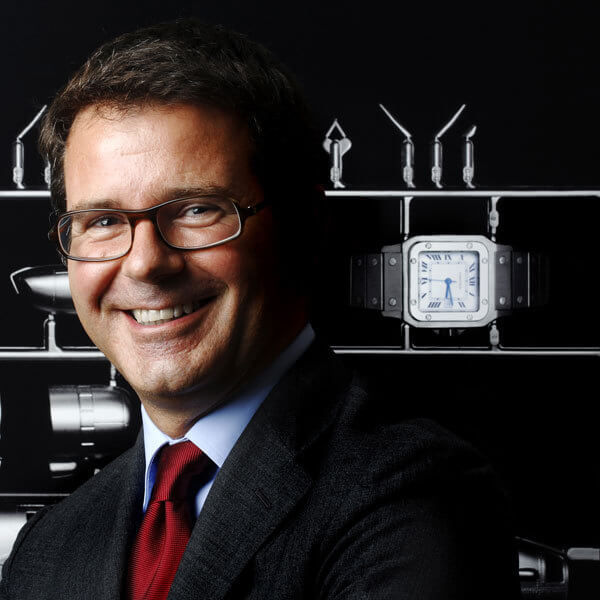There’s nothing mysterious about it! It may help you to understand my role if I put it back into context. Firstly, you should know that I have been with Cartier for 27 years. Already, under Alain-Dominique Perrin, I was involved with products. From there I became creative director and head of communication. All this followed a natural progression which means I am now, in a way, the first port of call for anything that concerns style.
Let me give you an example. Every Friday, Bernard Fornas and I meet with the heads of each of Cartier’s design studios: jewellery, watches, one-offs, accessories and soft items. We’re joined by the technical managers in these different areas and the person in charge of the sales sector. Basically, representatives of all Cartier’s expertise. And we talk. We go over each of the collections and each of the proposed items, always with the same questions in mind: How does this object reflect Cartier’s values? How is it new and how does it fit with the contemporary world? Let me tell you, we have some fascinating and sometimes quite heated discussions! Over and over, these creators lay themselves bare. My role is to take a decision based not on my personal taste but a frame of mind which, for decades, has been steeped in Cartier’s savoir-faire.
Highly recognisable though never standing still. Cartier doesn’t have to go round in circles to be Cartier.
Cartier has its roots in jewellery. This was our first activity and one that still defines our principal values today. Cartier is excellence in craftsmanship taken to the extreme; Cartier is about working with the most precious materials. We’re touching on mankind’s most cherished artistic values. Throughout each era, jewellery has been a part of every human culture. It has always represented noble symbolic values. It expresses timelessness and continuity. At Cartier, we’re all very much aware of the artistic and ethical aspects of craftsmanship, even if we are – we all have to make a living – a commercial enterprise.
Daring is one, not just in terms of creativity but also in the way we develop. And I’ll insist particularly on universality and a readiness to embrace cultures from around the world. All this springs from our expansion in the early twentieth century. The Cartier brothers travelled to the four corners of the globe, immersing themselves in a multitude of things. Better still, they did it with intelligence, never seeking to appropriate these cultures or establish any kind of hierarchy. This has nothing to do with exoticism, a word I detest, but a fundamental understanding of the symbols, materials and colours of each object, and respect for the figuration of each one. The history of many civilisations’ art is expressed through Cartier. We look for this same profundity today.
Probably not, but no matter. There are always several levels of interpretation.
Cartier understood the importance of heritage very early on, but it was only from the 1970s that we implemented a genuine policy to classify archives and conserve objects. From there, we could define a road map. A little later, in the mid-1980s, the decision was taken to build an actual collection and, where necessary, buy back certain objects. The idea is to show the continuity of creation at Cartier, to draw a line connecting past, present and future. With some 1,400 objects now in the collection, it has reached maturity. It’s almost complete.
Certainly not! Nothing static at any rate. As you know, we want to share the collection with as many people as possible, on every continent, through travelling exhibitions that we hold in emblematic locations such as the Forbidden City in Beijing or Prague Castle. This is far more interesting as it means we can constantly show new sides of the collection, taking into consideration the opinions, vision and culture of the partners with whom we work. It’s fascinating. Each time, we see these wonderful objects in a different light.




















